Written by Isabella Allan, Scottish Lowlands placement student
Throughout August and September of last year the Scottish Lowlands Research team undertook pitfall trapping on the six farms in the PepsiCo FAB project. We sampled at some beautiful locations, surrounded by the flowers of cover crops and pollinator mixes, and made sure to sample contrasting habitats at each farm. For example, at Leckerstone we sampled a stubble field, a fallow field, a hedge, and an area of wildflower mix (called pollen and nectar mix; figure 1).
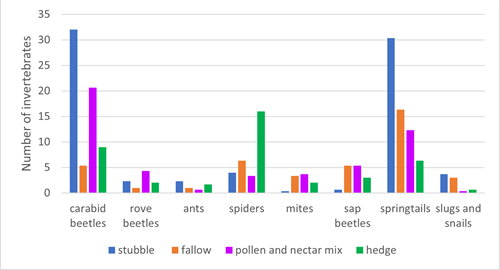
Figure 1. The assemblage of invertebrates that were found in four habitats at Leckerstone farm.
A pitfall trap consists of a plastic cup with water and a drop of washing up liquid in it (to break the water tension), and a piece of chicken wire over the top to stop any larger animals falling in. The cups were dug into the ground so that the rim was at ground level (figure 2). This allows ground invertebrates to fall into the trap. The traps were left for six days and the contents were then moved into sample pots and taken to the lab to be identified.
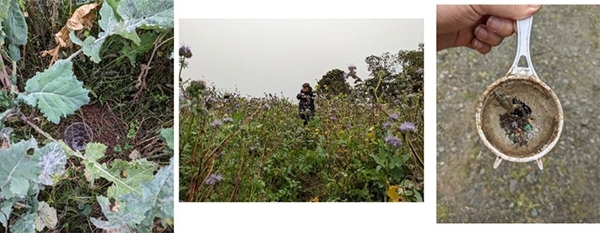
Figure 2. The process of pitfall trapping: left is a pitfall trap in the ground, middle is the contents of a pitfall trap
being moved into a sample pot, right is the contents of a pitfall trap emptied into a sieve. Credits: Isabella Allan.
There were many different species found across the farms: from thousands of springtails, to hundreds of carabid beetles, to a handful of ladybird larvae (figure 3). The data was collated and analysed to produce graphs of the findings on each farm. We separated the invertebrates into the categories of predatory and non-predatory to determine whether habitats such as these could be useful for integrated pest management.
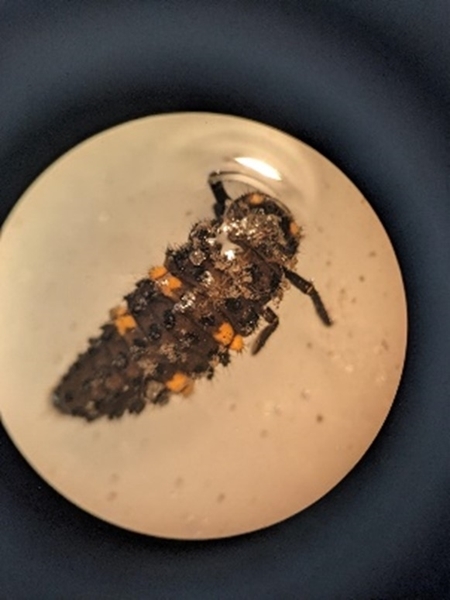
Figure 3. Ladybird larva from a pitfall trap under a microscope. Credit: Isabella Allan.
The proportion of predatory invertebrates in a given farm habitat can be useful to know as many eat invertebrates that are pests or are likely to carry diseases: just as ladybirds predate aphids. On Gilston farm, the cover crop and the wildflower mix (called a bumblebird mix) that we sampled had significantly more predatory insects than the reed bed and grass margin (figure 4). This is important due to the potential increase in predatory invertebrates that could occur with an increase in wildflower mix plots. If you can encourage the relevant species to spread from these plots into your crops, you may reduce the need for artificial pesticides and insecticides.
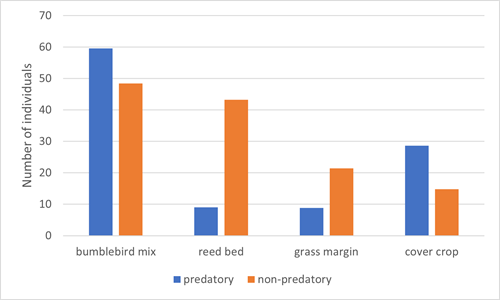
Figure 4. The average amounts of predatory and non-predatory invertebrates we found in four habitats at Gilston farm.
On Balgonie farm, we laid the pitfall traps in a potato field at various distances from a wildflower filled tramline. This was an experiment aimed at investigating how effective the tramlines are at supporting enough predatory invertebrates so that there is some spillover into the potato crop. The graph shows that we found more predatory invertebrates closer to the tramline, but analysis suggests that more samples are needed in order to come to a reliable conclusion (figure 5).
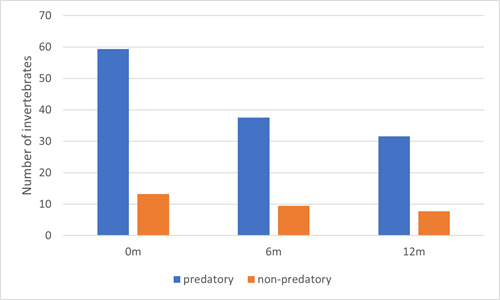
Figure 5. Average amounts of predatory and non-predatory invertebrates found at
three different distances from the wildflower tramlines in a potato field at Balgonie farm.
In general, we found a higher diversity of invertebrates in habitats such as hedges, cover crops, and wildflower mixes than in grass margins and stubble fields. We also found a higher density of predatory invertebrates in cover crops and wildflower mixes than the other habitats sampled. Across the board, the most abundant predatory invertebrate was the carabid beetle, with an average of 40 beetles per sample on some of the farms! We hope to do more work on this project in the coming year, and hopefully create an overview of the ground invertebrate species on each of the farms.

Figure 6. One of the sampled habitats on Gilston Farm: a cover crop filled
with flowers such as phacelia and sunflowers. Credit: Isabella Allan.